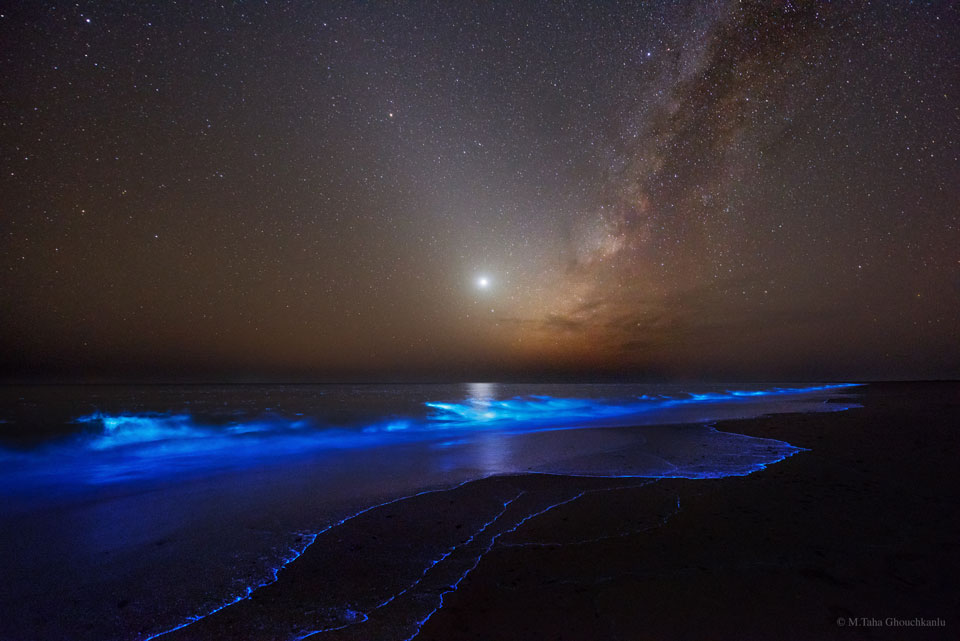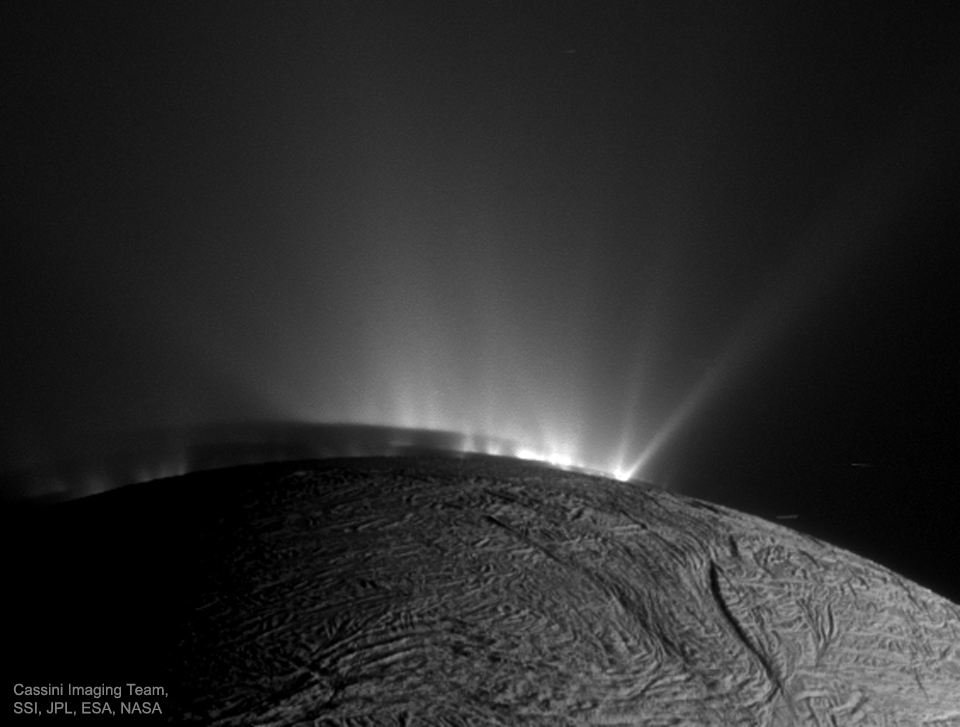"Touch me (I want your body)
18.4.17
Astronomy picture of the day - 2017 April 18 - Night Glows

Image Credit & Copyright: Taha Ghouchkanlu
Explanation: What glows in the night? This night, several unusual glows were evident -- some near, but some far. The foreground surf glimmers blue with the light of bioluminescent plankton. Next out, Earth's atmosphere dims the horizon and provides a few opaque clouds. Further out, the planet Venus glows bright near the image center. If you slightly avert your eyes, a diagonal beam of light will stand out crossing behind Venus. This band is zodiacal light, sunlight scattered by dust in our Solar System. Much further away are numerous single bright stars, most closer than 100 light years away. Furthest away, also rising diagonally and making a "V" with the zodiacal light, is the central band of our Milky Way Galaxy. Most of the billions of Milky Way stars and dark clouds are thousands of light years away. The featured image was taken last November on the Iranian coast of Gulf of Oman.
Astronomy picture of the day - 2017 April 17 - Two Million Stars on the Move
Video Credit: ESA, Gaia, DPAC
Astronomy picture of the day - 2017 April 16 - Life-Enabling Plumes above Enceladus

Image Credit: Cassini Imaging Team, SSI, JPL, ESA, NASA
Explanation: Does Enceladus have underground oceans that could support life? The discovery of jets spewing water vapor and ice was detected by the Saturn-orbiting Cassini spacecraft in 2005. The origin of the water feeding the jets, however, was originally unknown. Since discovery, evidence has been accumulating that Enceladus has a deep underground sea, warmed by tidal flexing. Pictured here, the textured surface of Enceladus is visible in the foreground, while rows of plumes rise from ice fractures in the distance. These jets are made more visible by the Sun angle and the encroaching shadow of night. A recent fly-through has found evidence that a plume -- and so surely the underlying sea -- is rich in molecular hydrogen, a viable food source for microbes that could potentially be living there.
Inscription à :
Articles (Atom)
LES PLUS BELLES GARES - États-Unis - Washington
Ouverte en 1908, Union Station est la principale gare de Washington DC, aux États-Unis. Abîmée, le toit effondré, elle a été refaite à neuf...
